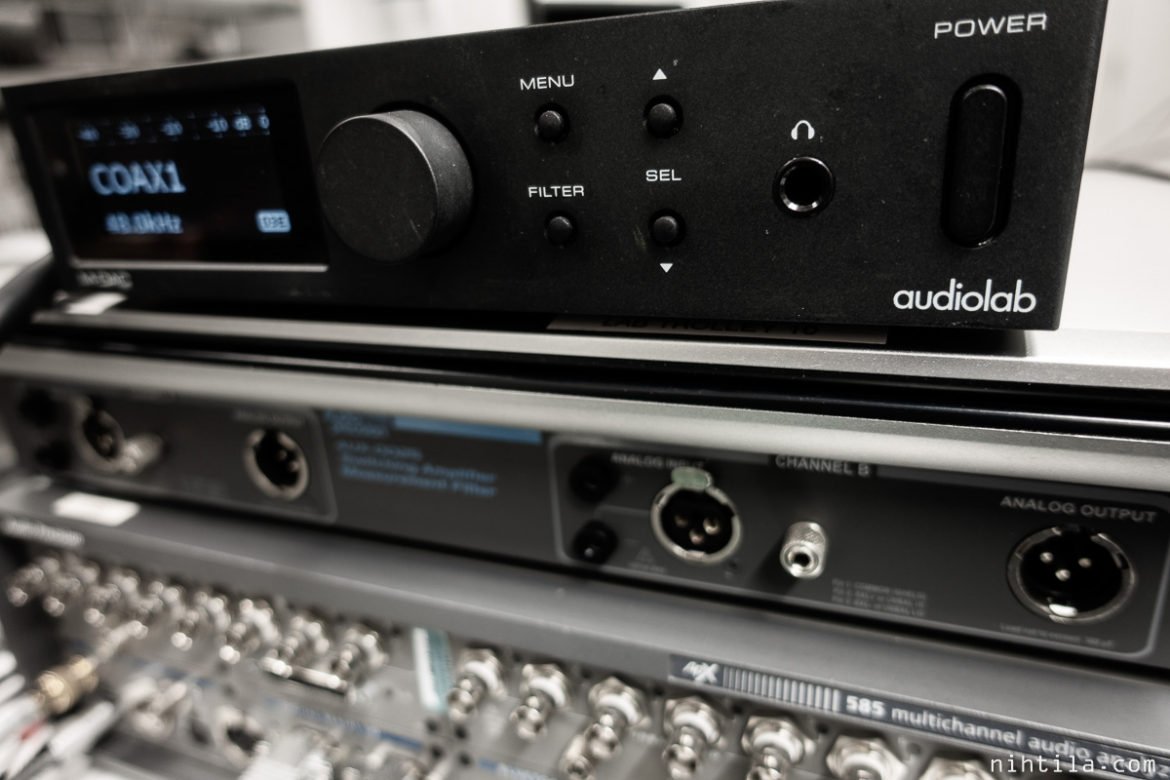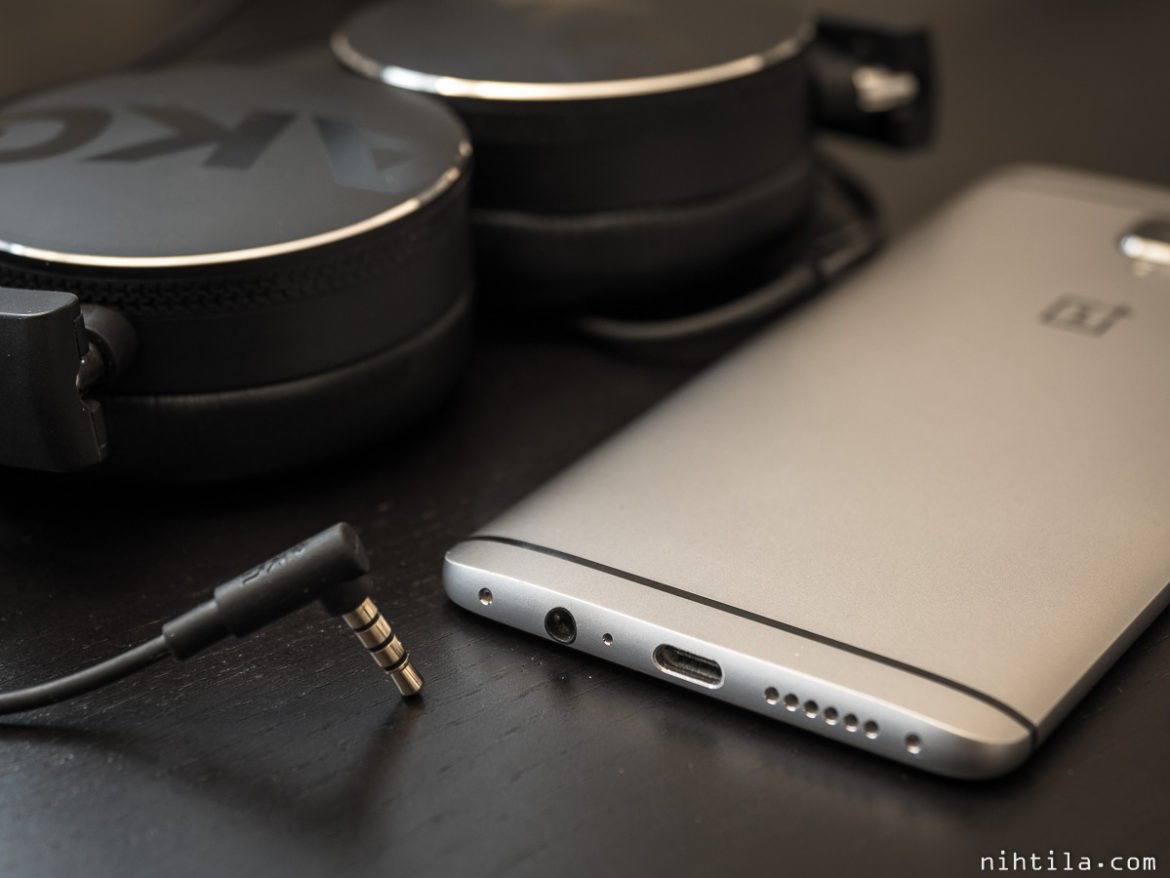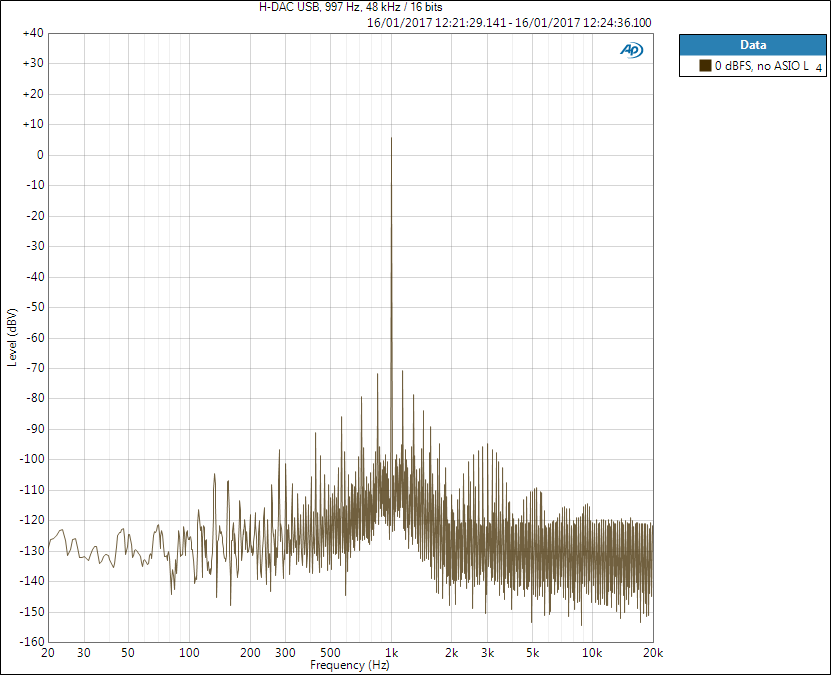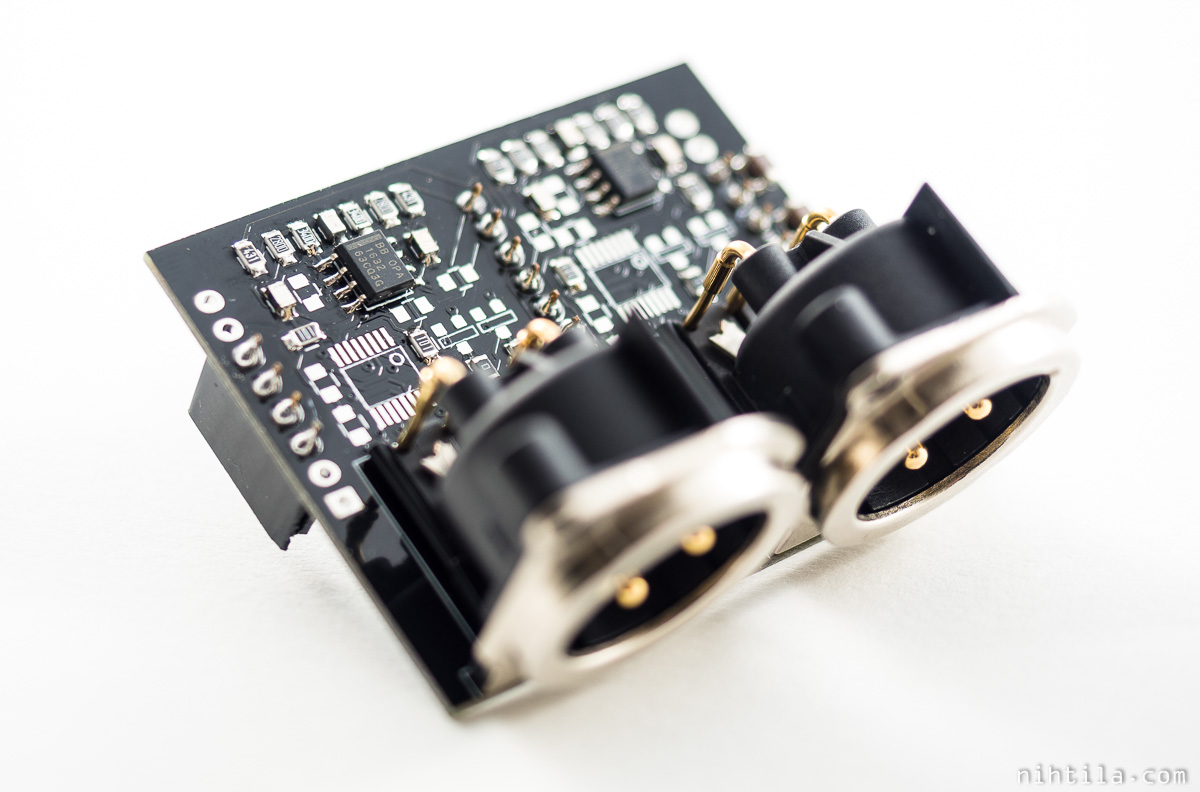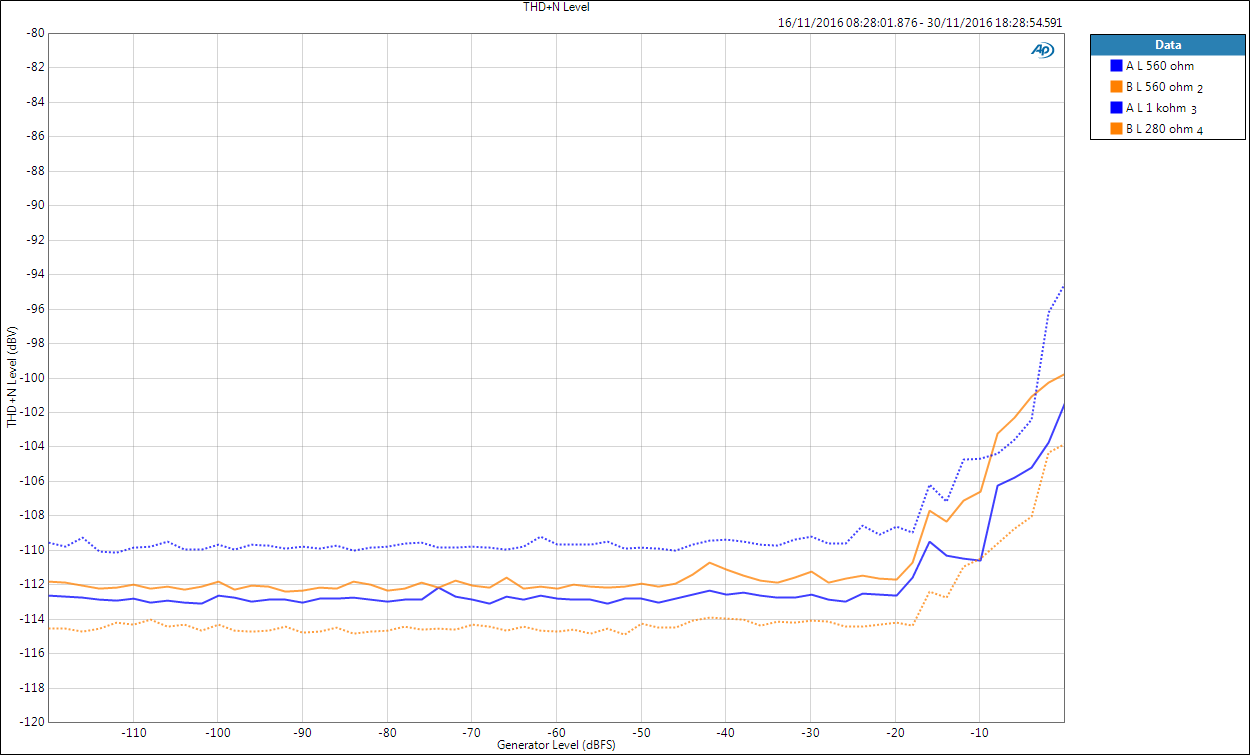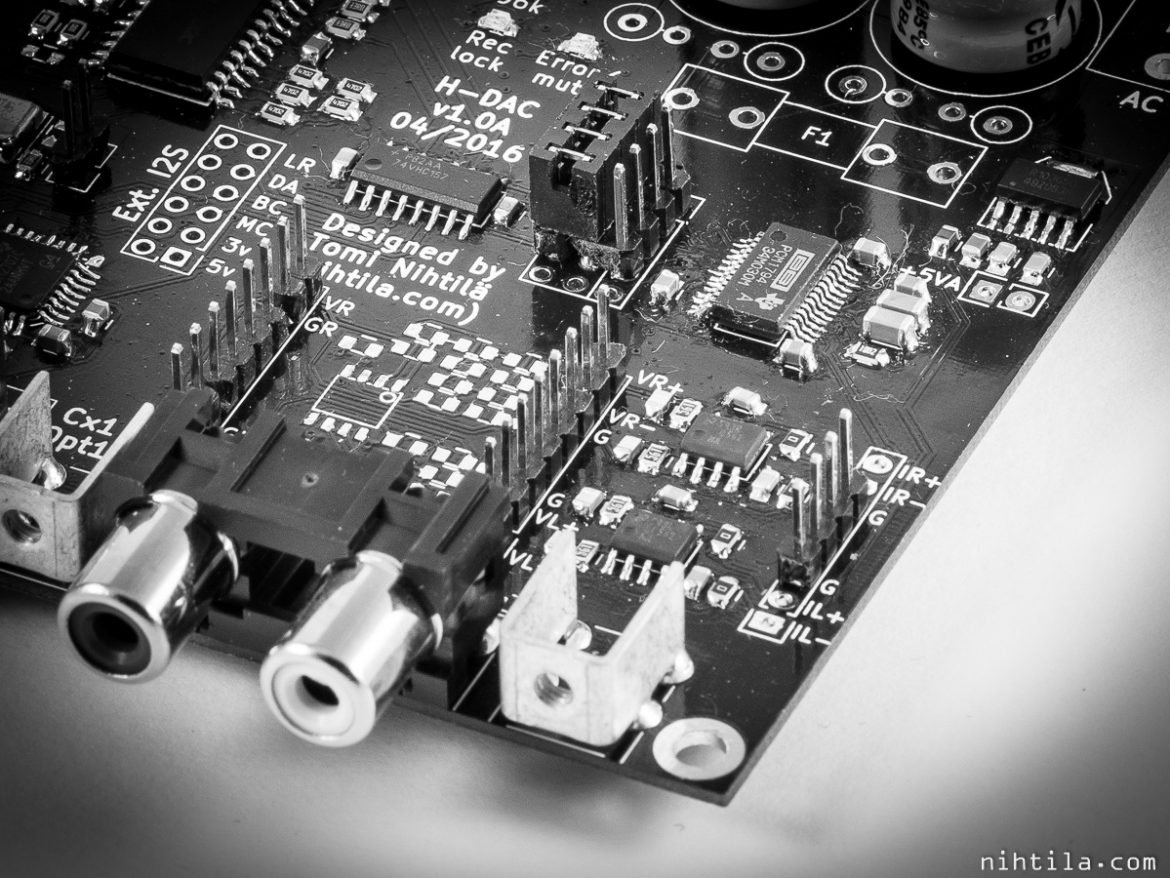I bought a second hand M-DAC a while ago to have a well-known commercial reference in terms of measurements and sound. After teardown it is time for measurements. The first part focused on the base performance and this second part dives into the digital filters and their impact on measurements.
Measurements
I bought a second hand M-DAC a while ago to have a well-known commercial reference in terms of measurements and sound. After teardown it is time for measurements. This first part consists of basic performance measurements.
HP Buf improvements – 500 mW into 32 Ω headphones with 0.00015 % THD+N!
HP Buf headphone amplifier’s already excellent THD+N figures can be pushed extremely low by replacing OPA2134s with LM4562s. This gives huge performance boost:
- 5-8 dB lower noise floor, depending on gain setting
- Up to 12 dB better THD+N
- For example, THD+N at 100 mW into 32 Ω went down from 0.00065 % (-104 dB) to 0.00017 % (-115 dB)
- OnePlus 3’s 16-step volume control has too coarse steps – 5 dB in the middle volume range.
- Maximum output level is -1.5 dBV (around 95 dB THD+N ratio), providing over 20 mW into a typical 32-ohm headphones – more than enough for any portable headphones.
I’ve had my OnePlus 3 phone since last October. Generally I have been very happy with it, excellent value for money. I’ve had some battery drain issues, especially after upgrading to Android Nougat but it hasn’t been really an issue since factory reset – although battery life is still not the strongest point of this handset. Anyway, I can highly recommend the phone.
However, one annoying feature is the way the volume control works. The steps are simply too large. I don’t listen to music horribly loud with headphones so with a sensitive pair of travel headphones, such as my AKG Y50, I find searching for the ideal level between two steps. At lower step the volume is too low, at next step it gets slightly too high. I am quite sure I was able to fine-adjust the volume by sliding the slider with my finger in my old Nexus 5 but in OnePlus 3 the level is forced into those pre-defined steps.
- By default, Windows audio quality can be technically inferior as has been shown in this measurement.
- ASIO drivers or similar can improve audio output significantly by bypassing Windows resampling and other not-so-well implemented audio processing stages.
This post arose as a consequence of testing the USB-input of H-DAC. Its PCM2707C-circuit is capable of “only” 48 kHz / 16-bit audio so I was not expecting superb measurement results but was still amazed how bad they actually were. This is purely a technical inspection but the differences are significant so I can easily imagine some golden ears can spot the difference.
Following performance figures have been measured in Addon BalOut module:
- Both opamps are so good that it is difficult to measure differences directly.
- LME49724:
- Noise level: -117 dBV (A-weighted),
- THD+N ratio: at least -109 dB (1 kHz, 2 Vrms), around measurement instrument limits.
- OPA1632:
- Noise level: -118 dBV (A-weighted),
- THD+N level: at least -109 dB (1 kHz, 2 Vrms), around measurement instrument limits.
Basically in all of my PCM1794A measurements I have seen something strange going on in the distortion figures between left and right channels. Right channel is constantly weaker but the results are very consistent between measurements, parts, and even different opamp models, while left channel shows better performance but the results are very inconsistent.
I will show few examples from different measurements. To be honest, I still do not know what is the root cause of these variations. While I was expecting my design and PCB to be the guilty one, I have seen the behaviour between different component and even different PCBs, it is inevitable that I start pointing my finger at the PCM1794A itself. But before drawing the final conclusion, I will still create a very simple and symmetric test board. However, now I will just present the results I have gathered so far.
- LM4562 and NE5532 show almost identical performance in I/V stage, while OPA2134 is 2 dB weaker.
- LM4562 is the best performer in differential amplifier.
- The best solution is to use NE5532 in I/V-stage and LM4562 in differential amplifier as it gives almost identical performance to all-LM4562 implementation
- Differences in distortion are mostly due to odd left/right channel differences of PCM1794A.

